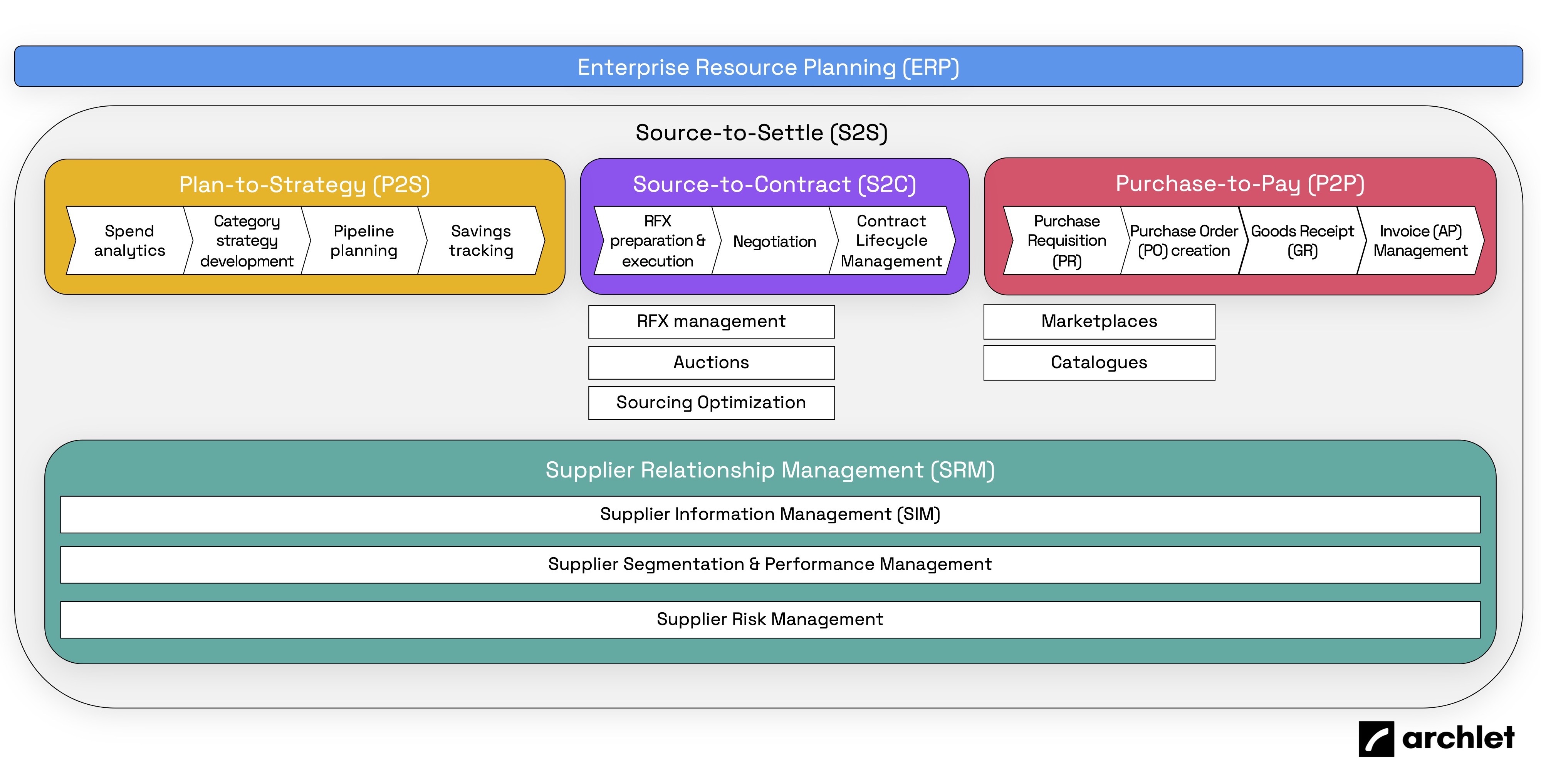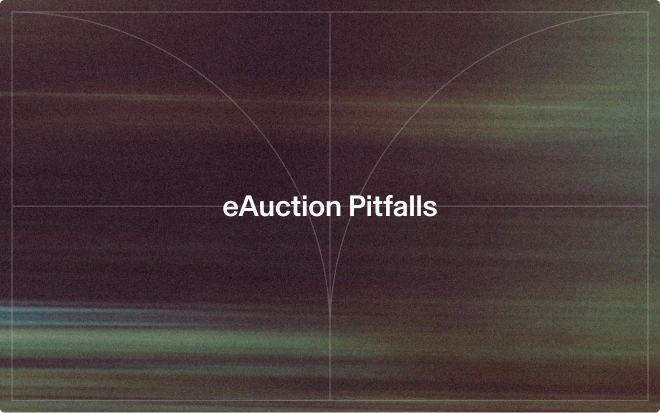Walk the talk on Procurement technology – understanding key terminology to discuss Procurement software with confidence

Walk the talk on Procurement technology – understanding key terminology to discuss Procurement software with confidence
Procurement has its own vocabulary. Period. Procurement software vendors and consultancies are adding a variety of terms to the discussions around Procurement technology. This can make professionals not dealing with this day-in day-out a little uncomfortable and uneasy.
We know that everybody is putting out “comprehensive” or “essential” glossaries, so no real need to do the same for us. Instead, we want to give you a cheat sheet focused on the most important terms and abbreviations relevant for discussing Procurement or sourcing software (can you guess why?).
We hope it helps you turn the gibberish into knowledge that gives you the confidence to tackle the digital transformation in Procurement. Because before you can walk the walk, you need to be able to talk the talk.

Procurement technology solutions
What is a Procurement Suite provider?
Procurement suite provider refers to a procurement software provider that offers services and capabilities across the entire procurement or source-to-settle process. The focus is on breadth of capabilities rather than individual depth to ensure a variety of processes can be managed by a single solution.
What is a Best-of-breed solution?
Best-of-breed procurement software solutions are focused on solving a specific challenge or pain point in the procurement process in depth rather than a variety of issues. This focus means that they can provide more detailed solutions that cover a variety of use cases within a confined focus area.
What is a Hybrid Procurement solution?
A hybrid procurement solution refers to the approach of enhancing a procurement suite with one or multiple best-of-breed solutions to address the increased need for solution depth in areas that create the most value for the organization.
Procurement technology terminology
Source-to-Settle (S2S)
Source-to-settle (S2S) refers to the end-to-end procurement process from spend analytics to invoice payment.
Plan-to-Strategy (P2S)
Plan-to-strategy (P2S) covers the upstream part of the procurement process and includes spend analysis, category strategy management, pipeline planning and savings tracking.
Source-to-Contract (S2C)
Source-to-contract (S2C) refers to the more executional part of the procurement process and covers sourcing, negotiations, and contract management.
Purchase-to-Pay (P2P)
Purchase-to-pay (P2P) refers to the transactional part of the procurement process and summarizes all steps from raising a Purchase Requisition (PR) to paying the invoice.
Source-to-Pay (S2P)
Source-to-pay (S2P) includes the executional and transactional part of the procurement process and includes all source-to-contract and purchase-to-pay related activities, from sourcing and contracting to purchasing and invoice management.
Enterprise Resource Planning (ERP)
Enterprise resource planning (ERP) refers to the system used by organizations to manage their primary business activities and operational processes such as procurement, accounting, planning, and production.
The ERP system is the system backbone of the organization and connects multiple departments by enabling a seamless flow of information required for business processes and reporting requirements.
Supplier Relationship Management (SRM)
Supplier Relationship Management (SRM) is the umbrella term for managing an organization’s supply base with the aim of ensuring healthy business relationships. It includes topics like managing the information on record for suppliers, analyzing and segmenting them based on their relative importance to the organization, evaluating and tracking their risk profile, managing their performance, and establishing an overall communication strategy related to these topics.
Supplier information management (SIM)
Supplier Information Management includes capturing, storing, analyzing, and updating all relevant supplier data to optimize the organization’s interactions and transactions with suppliers.
Spend Analytics
Spend analytics refers to the process of collecting, cleansing, classifying, and analyzing spend data.
Spend Analysis
Spend analysis describes the process of grouping, categorizing, and analyzing the organization’s spend data to increase transparency on historic spend data and understanding underlying patterns. Spend analysis is the starting point for strategically managing spend categories and a major input for developing category strategies or identifying sourcing opportunities.
To find out more about the difference between spend analysis and spend analytics, check this in-depth guide to spend analysis from our friends at Sievo.
Pipeline & savings management
Pipeline and savings management refer to the process of ideating, planning, managing, and tracking of sourcing projects. The pipeline captures all sourcing opportunities known by the organization as output from spend analysis or category management activities.
Each individual project in the pipeline gets tracked to understand potential implications on the Procurement team in terms of resource requirements, savings opportunity, timelines, and likelihood. The associated savings are tracked to measure the performance of the procurement team and to support organizations in demonstrating their financial performance towards their business stakeholders.
To find out more about how to optimize your pipeline and savings management, check out our friends from Per Angusta.
Contract Lifecycle Management (CLM)
Contract lifecycle management (CLM) describes the management of an organization’s contracts across its lifecycle from initiation to contract renewal or termination. The contract lifecycle includes the steps requesting a contract, authoring the contract, negotiating terms and conditions, approval and signature, execution, compliance review, and contract renewal or termination.
Contract repository
Contract repository refers to a central database and workflow solutions for the storage of contract documents and associated meta descriptions. Workflow capabilities and automated notifications allow the management of documents throughout their lifecycle.
Contract authoring
Contract authoring refers to capabilities relevant for writing, sharing, redlining, and signing contracts in an environment accessible to procurement teams and suppliers.
eProcurement
Electronic procurement refers to capabilities that enable the execution of the purchasing process through web-based applications. The term is loosely used to describe the purchasing process from purchase requisition to purchase order (see P2P) through electronic means like standard purchase orders, catalogues, or marketplaces.
Marketplace
A marketplace in procurement refers to a platform or a network where suppliers keep an updated list of goods and services to enable procurement departments to order the goods and services they need efficiently.
Sourcing software terminology
(e)Sourcing
Sourcing refers to the activities required for the identification, assessment, and evaluation of suppliers in a structured tender process. It includes requesting, receiving, and analyzing information, proposals, and quotations (bids), as well as negotiating terms and conditions required for developing the contractual agreement with suppliers.
Electronic sourcing (eSourcing), or electronic tendering (eTender), refers to using web-based platforms (sourcing software) to execute sourcing events and negotiations.
What is a “Request for...” (RFx)?
"Request for x", RFx summarizes all main types of sourcing events executed by Procurement teams, with x acting as a placeholder for information, proposal, or quotation. A request performed by electronic means using sourcing software is called eRFx.
What is a Request for information (RFI)?
The request for information refers to the early process within a sourcing event where Procurement sends potential suppliers a set of screening questions. The RFI is used to evaluate supplier capabilities and if suppliers fulfil the organization’s requirements.
What is a Request for proposal (RFP)?
A request for proposal refers to Procurement requesting potential suppliers to deliver a proposal of how they would meet the needs and requirements of the organization for a described problem or challenge. The RFP is used when the solution to a problem is still open and allows organizations to collect different viewpoints on how the challenge can be solved. RFP is sometimes wrongly called Request for Price, which is actually the RFQ.
What is a Request for quotation (RFQ)?
The Request for Quotation refers to the process of requesting a legally binding price in a predefined format/structure for a clearly specified product or service, including the conditions of supplying the needed items.
What is an (e)Auction?
Auctions are part of the final stage in the sourcing process and represent one way of negotiating the best terms and conditions with suppliers. Auctions create competitive pressure through condensed timelines for closing the negotiation and through live feedback. An electronic auction is an auction executed through digital platforms or sourcing software.
In an auction, procurement departments receive competing bids from suppliers aiming to win a contract for supplying goods or services. While the objective of auctions is the same as of any negotiation, they are often seen as purely price focused.
The most common auction types applied in Procurement are (reverse) "Japanese", "Dutch" and "English" auctions.
Japanese Auction
The Japanese auction is a ticker auction where the prices of the goods or services start high and decrease at preset intervals. At each step, the suppliers confirm or decline the proposed price. The auction is over when only one supplier is left (last man standing).
Dutch Auction
The Dutch auction is an increasing-bid auction. The auction starts at a low price that increases within defined steps at pre-defined time intervals. It ends as soon as the first supplier accepts the price and terms and thereby wins the auction (first come, first serve).
English Auction
The English auction is an open, time-restricted auction where live feedback (e.g., through ranking) stimulates the competition among suppliers. When the time is up, the supplier offering the highest value or lowest price wins the auction and is awarded the contract (eBay in reverse).
Sourcing analytics
Sourcing analytics refers to the capabilities supporting the analysis of supplier inputs during a sourcing process. Capabilities include data cleansing, outlier detection, opportunity identification, competitive analysis, and reporting to derive actionable insights.
Sourcing optimization
Sourcing Optimization refers to the use of linear mathematical optimization to calculate the optimal award allocation under consideration of given business rules. These can be internal business constraints and preferences or external limitations such as capacity constraints of suppliers.
The same concept and technology used for computing sourcing scenarios is used to calculate possible routes in Google Maps, where personal preferences and traffic situations represent internal and external constraints.
The Archlet Sourcing Optimization App provides intuitive and flexible options to create and consider business rules that support holistic decisions.
What is a Sourcing Scenario?
A sourcing scenario represents the supplier award decision under consideration of relevant business rules. The award decision in a sourcing scenario is optimized for the award option that meets all relevant internal and external business constraints.
Common sourcing scenarios in Procurement include:
Cherry pick scenario (lowest cost scenario)
The cherry pick scenario represents the lowest possible cost scenario by picking the lowest cost supplier for each individual item. The scenario is often unrealistic as procurement teams have different objectives like reducing the number of suppliers or distributing risk. The scenario does provide a good indication for negotiation opportunities.
Incumbent scenario (no change scenario)
The incumbent scenario awards the business to the incumbent (current) supplier, therefore representing a no-change approach. Due to potential switching costs when working with new suppliers, this scenario provides valuable information and is often considered the default option.
Max. Number of winners
Limiting the total number of winners in an award is a typical scenario that helps qualify the trade-off between managing multiple partners, distributing risk, and reducing costs.
The Archlet Sourcing Optimization App enables scenario-based thinking and holistic decisions. You can learn more about sourcing scenarios in our introduction to sourcing optimization (white paper).
Guided Sourcing
Guided sourcing describes features in a sourcing software that guide users through the creation and execution of sourcing events to increase the decision quality and sourcing efficiency. Capabilities include insights and recommendations on event types, negotiation types, behavioral insights, and scenario recommendations.


